SB visits… Belle de Brillet
By Lauren BowesNestled in the heart of the Cognac region – in the little village of Graves-Saint-Amant, on the border of the Petit Champagne cru, to be precise – is Maison Brillet. If you expected the brand to make Cognac, you wouldn’t be wrong – but that’s far from the whole story.
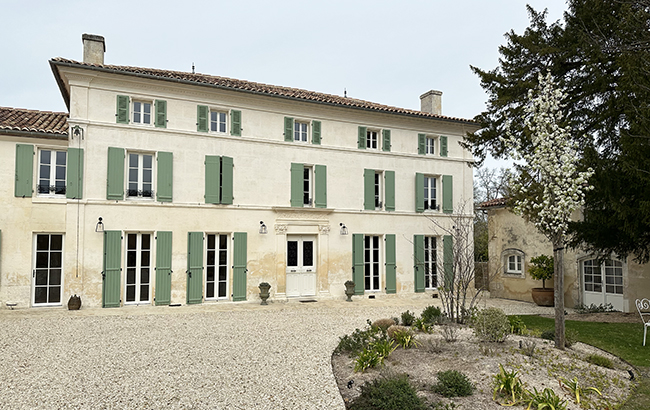
While the house has been producing Brillet Cognac since 1920, its flagship product is Belle de Brillet, a liqueur that combines the region’s favourite spirit, Cognac, with a pear eaux-de-vie. The expression won a Master at The Liqueur & Speciality Spirits Masters 2024, and was praised for its notes of “juicy, fruity pear, some woodiness and complexity of Cognac too”.
Arriving at the Maison, the first stop on our tour is the shop, which – along with the rest of the house – was renovated around a year ago. The building was previously an orangery before it became the office of Jean-Louis Brillet, the 10th generation of the Brillet family. The store is now open to the public and offers – of course – Belle de Brillet, alongside its Cognacs, Pineau des Charentes and some other Maison-produced items, such as honey from its hives.
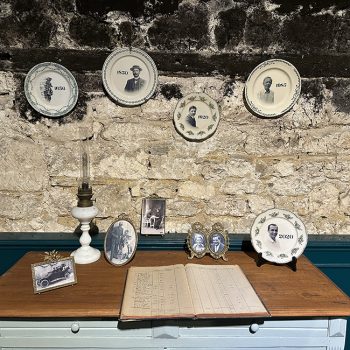
Introductions made and a pear-shaped macaron consumed, we headed over to the rest of the Maison for a history lesson. An array of family photos and heirlooms line the shelves of vintage cupboards, which I learned used to house the Brillet family’s clothes and bedsheets.
Our tour guide, Julie Salzard, takes us back to 1656, when Guy Brillet was born. He was the first in the family to settle in the Charente region and become a wine grower. Fast-forward 200 years to the seventh generation of the family, Vivien and Anna, and the Brillets have moved to the Maison we stand in, where they ultimately built their distillery and cellars.
It wasn’t until 1920 that the family began selling Cognac. Then, in 1980, Jean-Louis Brillet took over, with big plans for change. “He wished to continue the sales of Cognac and Pineau, but also to create a new product: something unique, something different that doesn’t exist elsewhere,” Salzard added.
He experimented with mixing Cognac with coffee, lemon, red fruits and more, but it wasn’t until he tried pear – in 1985 – that he was happy. The fruit harked back to desserts made by his mother and grandmother, while the name was inspired by his wife, Isabelle.
Having revolutionised and maintained the Maison for decades, Jean-Louis was ready for a well-earned retirement in 2020. He decided to keep the business in the family by selling it to his cousin, André Hériard Dubreuil – who just happened to be the owner of Rémy Martin Cognac and president of Rémy Cointreau.
This marked a turning point for Belle de Brillet, which up until this point had few global aspirations. With executive director Jean-Baptiste Sialelli now at the helm however, there was a new liquid, a modernised bottle and a renovation of the Maison.
To learn more about how the liqueur is made, we passed through the Maison’s cellars to its stills, which are now silent. Both the Cognac and the liqueur are now distilled at Rémy Martin’s facilities, which have top-of-the-range alembic stills, just 15 minutes from Maison Brillet. The historic Brillet stills have been kept and maintained however, because they are part of the family’s inheritance and history – plus, they serve as a very handy demonstration of how Cognac is made to visitors of the Maison.
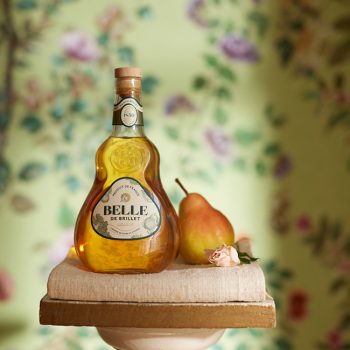
To the stills
Creating Belle de Brillet is a little more complicated than mixing a vat of Brillet Cognac with pears. For one thing, the Cognac used in the liqueur is different from the one the Maison ages. First, the liqueur is made with grapes from the Fin Bois cru, which Sialelli says offer a more lighter, more floral profile than those from Petit-Champagne, which the brand uses for its Cognacs. While these strong flavours make for excellent Cognac, in the liqueur they would easily overpower the pear eaux-de-vie; Fin Bois offers a “better balance”.
Second, the liqueur is made with Cognac distilled off the lees, while Brillet Cognac is distilled on the lees. “The lees bring something very complex and textured, which would also age well,” explained Salzard. “For the liqueur, we chose to remove the lees, because it could bring too much complexity and too much texture, upsetting the balance between Cognac and pear.”
So far, so Cognac. But what about the pears? Prior to Sialelli’s intervention, Belle de Brillet was made with Cognac and pear aromas – but no real pear-based spirit. With today’s consumer increasingly conscious of authenticity and health, Sialelli felt it was important to adapt the recipe to include a quality pear eaux-de-vie.
The eaux-de-vie begins with the Williams pear – or the Bartlett pear, as it’s called in the US. It was originally known as the ‘bon crétien’ – good Christian – pear, allegedly dating to 1483, when King Louis XI of France was offered a pear seed by a healer. “We use Williams because it’s the most aromatic pair,” explained Sialelli.
Maison Brillet works with producers in the Anjou region of France, who harvest the pears by hand at the end of August. The fermented pears are then smashed, with the peels and seeds removed to avoid any bitterness in the final product. “It’s not something we must do, but for Belle de Brillet, we want just the freshness and sweetness of pears,” explained Salzard.
The two spirits are blended, with equal parts Cognac and pear eaux-de-vie. Water, sugar and vanilla are also added, to create a liqueur of 30% ABV. Salzard explained that part of Jean-Louis Brillet’s hopes with his new product was to attract a new audience of young people and women, who didn’t necessarily see Cognac as a drink for them. Creating a liqueur offered this group something that was between Cognac and Pineau des Charentes (which is usually bottled at around 12%-15% ABV).
“Sugar is a bit like salt – it enhances the taste,” added Sialelli. “The way we use sugar is purely for a taste profile perspective. It’s also a very classical after-dinner drink, but it’s more accessible than a Cognac or whisky because the ABV is lower.” Another advantage of adding sugar is that it turns Belle de Brillet into a ready-made cocktail ingredient, providing both spirit and sweetness in one product.
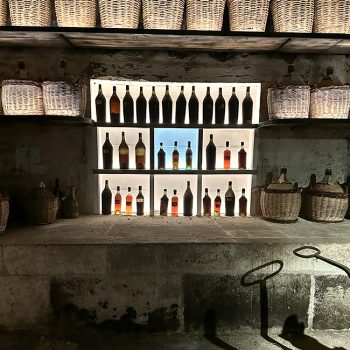
To the house
Before we head back into the main house, we stop for a quick look into Brillet’s cellars. There are a few casks laid down by Jean-Louis Brillet in 2019, along with what Cognac houses call Paradis – a selection of the Maison’s oldest expressions, bottled for posterity. “It’s the legacy and a picture of the 10 generations that came before us,” explained Salzard. One bottle from 1850 – the year the Brillets arrived at the site – sits proudly in the centre.
I was lucky enough to try one of the eaux-de-vie in the Paradis, which the brand is unable to date, though Salzard tells us it is one of the oldest it has. The expression is at cask strength but is still effortlessly drinkable, offering notes of cinnamon and cardamom alongside candied fruits.
Inside the house – which is much warmer and more beautiful than the cellars – we settled in for a tasting of the Maison’s current range. The Brillet range is available only in France and features the Sélection Spéciale Cognac, which is presented without an age statement and bottled at 40%. It’s a very balanced liquid, with notes of vanilla and lots of freshness.
There’s also an XO, bottled at 40%, which features liquid from the demijohns stored in the Paradis. This is what people usually expect from a Cognac, explained Salzard, with a very long-lasting finish and notes of candied fruit and wood. If it were a season, it would be winter, while the Sélection Spéciale is a definite spring.
Next up is the Pineau des Charentes. Maison Brillet’s version is unusually aged for more than 12 years, creating strong raisin notes and a super intense profile.
Finishing off the range is the Belle of the ball. The pear is immediately present, bringing a brilliant freshness on the nose and the palate. This is followed by the vanilla notes of the Cognac, which add a richness and a long finish. It is of course sweet, but not cloying – it would be perfect in a dessert or as a digestif.
Our trip concludes with a tasting of cocktails. One particular standout is the Belle Collins, made with orgeat syrup, which is the perfect afternoon companion looking out of the Maison’s windows to the village’s church and the Charente river beyond.
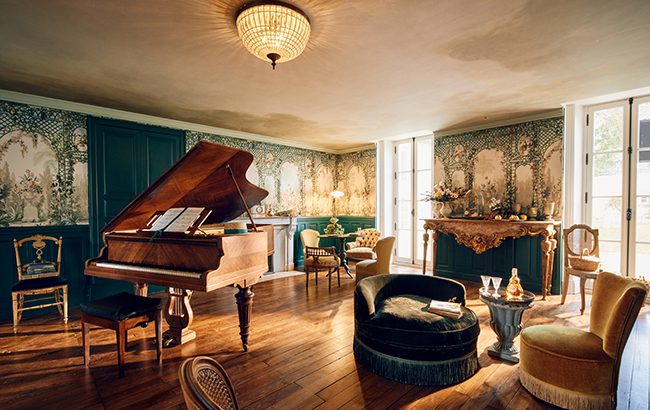
Related news
SB visits… Chablis with Renais
